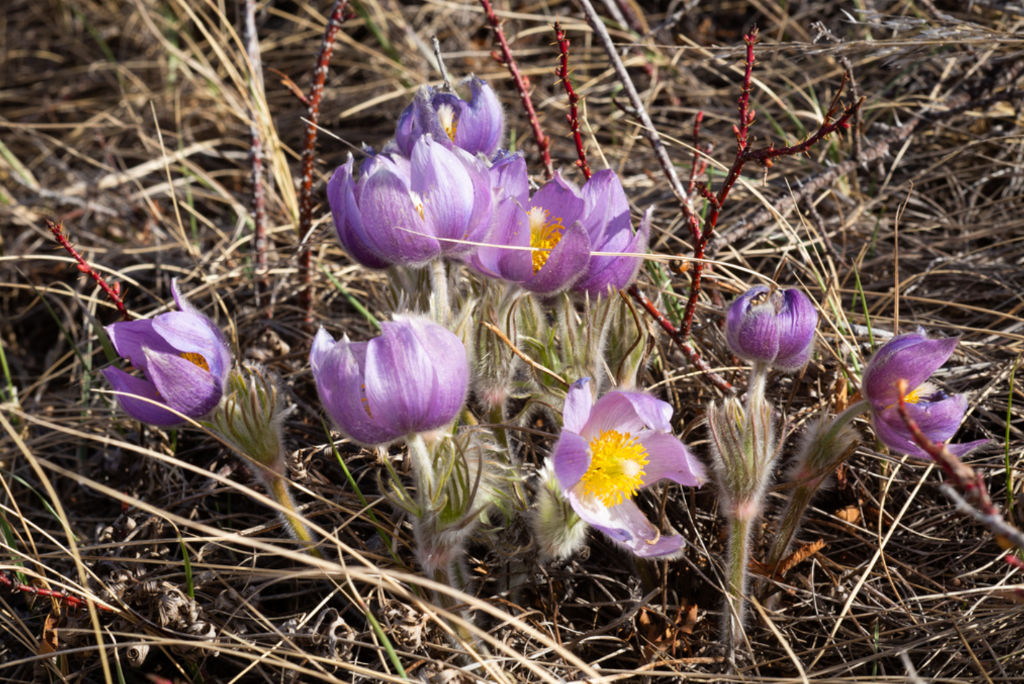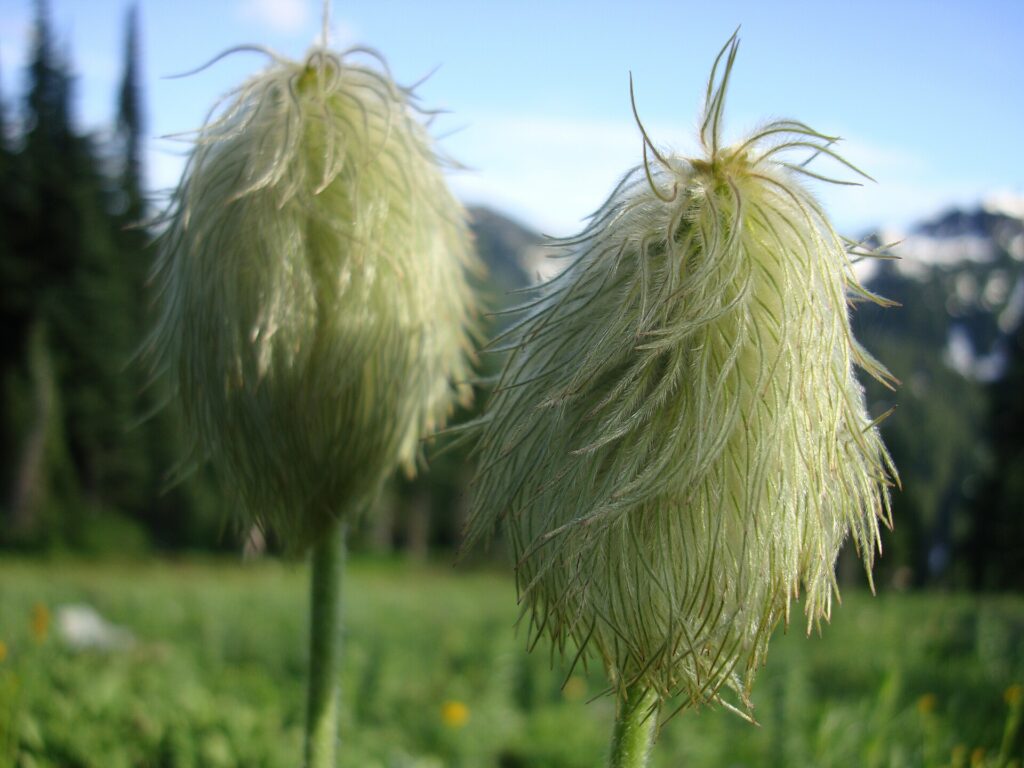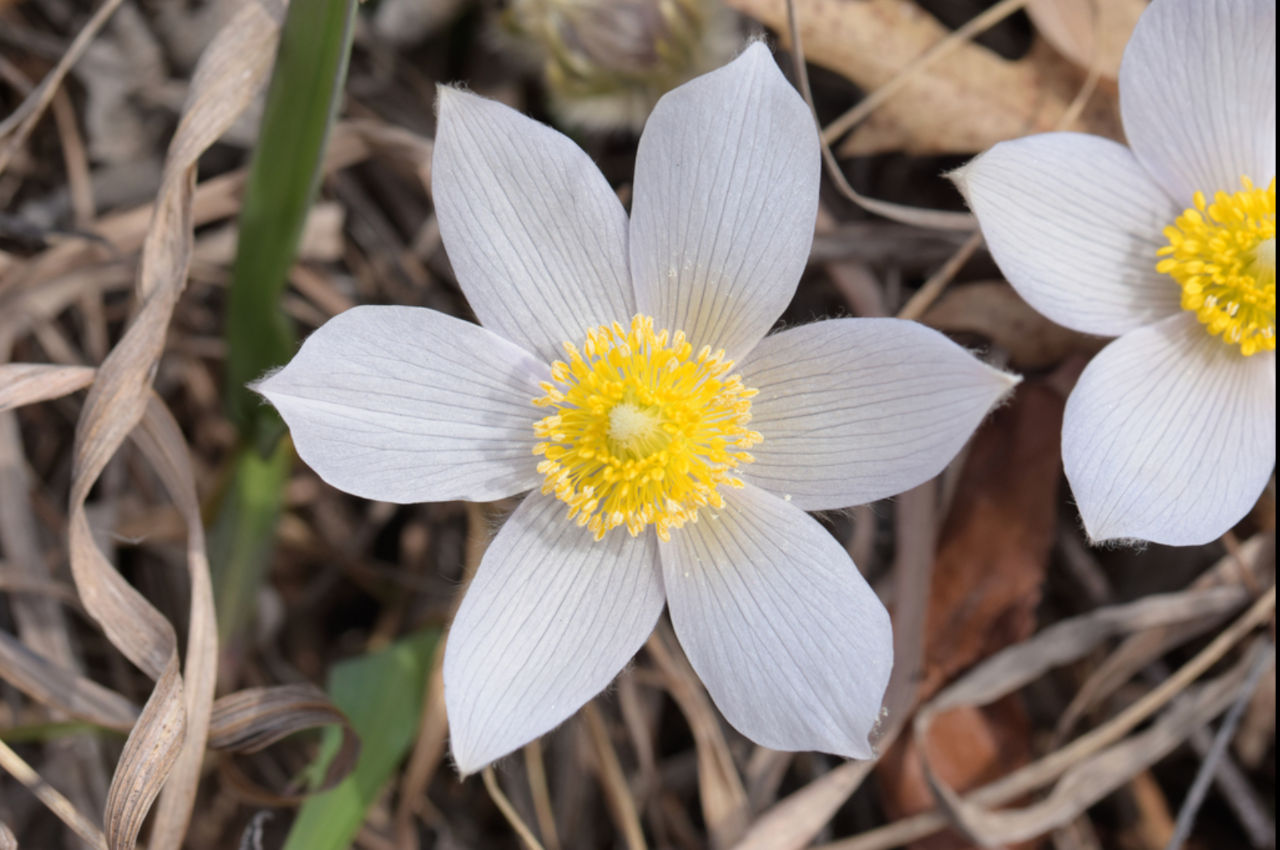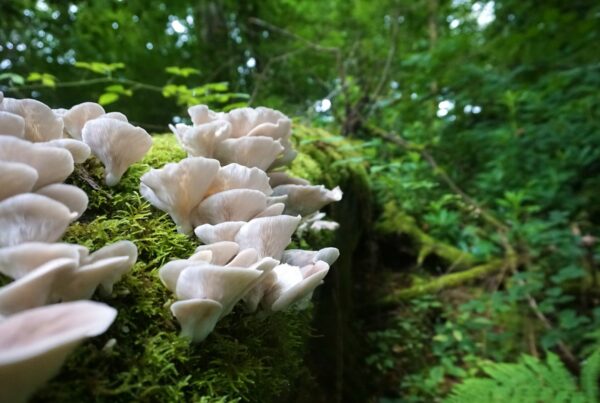One of the first spring wildflowers you will see blooming on the prairies and in the Rocky Mountains of Western Canada is the Pasqueflower, which is also known as the Prairie Crocus (Pulsatilla nuttalliana).
The Prairie Crocus blooms in a variety of colours with the most common colour being purple but they can also be white, pink, reddish, and a few species are yellow.

This beautiful flowering plant is a harbinger of the warmer and sunnier days of Spring and it holds a special place in local indigenous First Nations cultures as a symbol of rebirth and regeneration.
In the Plains Cree, it is known as Mostos Otisiy, which means “Buffalo’s Belly Button” as it was thought that a crocus would grow wherever a buffalo calf was born.
The Stoney Nakoda call it Wopeska Skan Hûga (Woya îtawagihâ), which means the “Chief of the Crocuses”. Once winter snow and ice are gone they say this wildflower gives the signal for all crocuses to come out in bloom.
This wonderful spring wildflower is found in the genus Pulsatilla, which contains about 33 species of herbaceous perennials native to meadows and prairies of North America, with many of them found in both Alberta and British Columbia.
One of my favourite Pasquflowers is the White Pasqueflower (Pulsatilla occidentalis), which blooms later in the spring typically in May or June.
The reason I find it so amazing is because after it blooms, it starts to look a lot like the sacred plants in the Dr. Seuss movie The Lorax!

Image Credits: Top image of Prairie Crocus taken by Mark Kluge, Purple Prairie Crocuses taken by Jason Headley and White Pasqueflower taken by Bordgious.
- 3 Tips For Foraging Wild Plants And Mushrooms In Alberta - April 29, 2024
- Reconnect To Your Original Nature Through Awe And Wonder - April 17, 2024
- Pasqueflower: A Spring Wildflower That Symbolizes Rebirth - April 5, 2024



